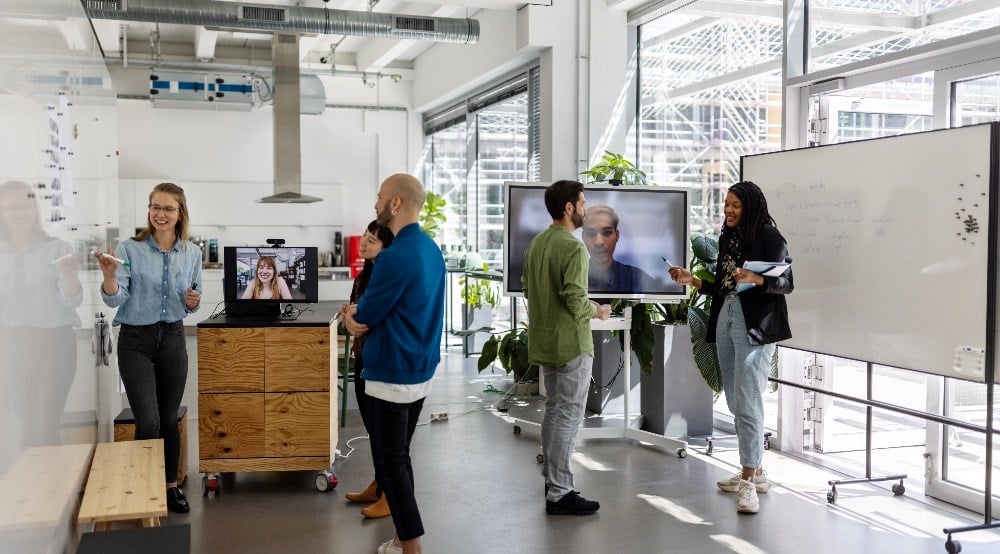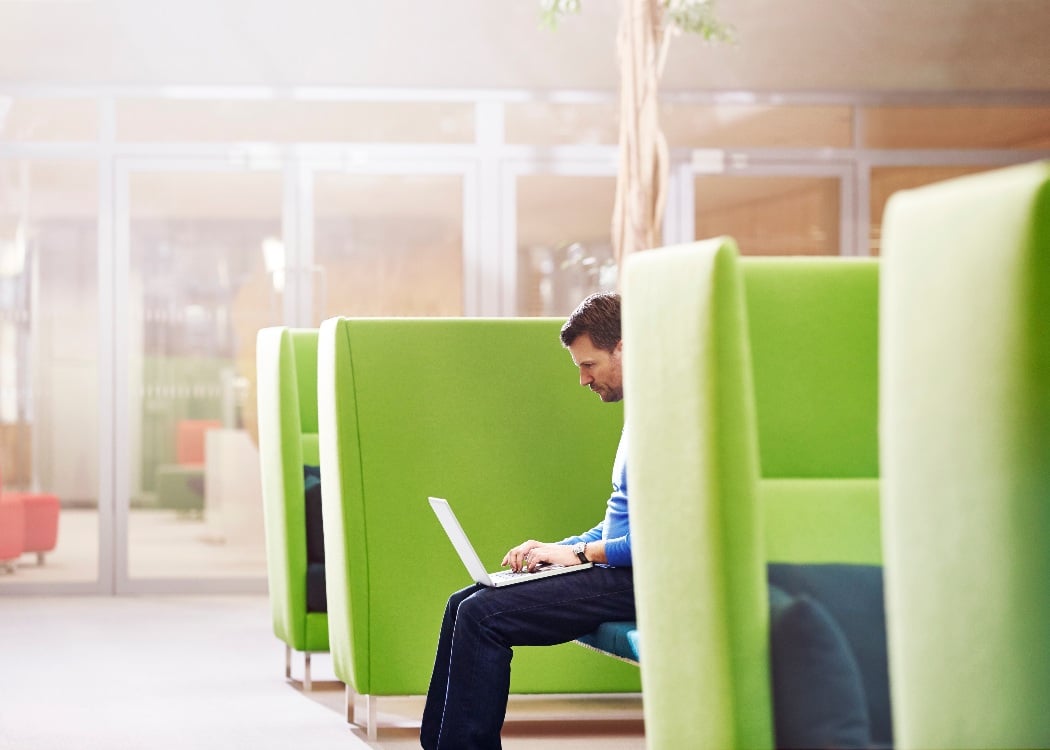
Let us help you with finding an office space
Our experts are here to help take the hard work out of finding your next office space.

Hybrid working, which sees employees split their time between the office and working remotely, has become the working model of choice, with 41% of employers planning to adopt it by 2023. But with all the benefits hybrid working offers, it isn’t without its challenges. Chief among them is designing a working environment that meets the needs of employers and employees alike.
In this guide, we’ll take a look at the pros and cons of the hybrid working model. We’ll then discuss the practical steps you can take to create hybrid offices that put people at the heart of your business.
The pandemic certainly accelerated the shift to more flexible working practices, but people were already dissatisfied with their working environments long before Covid came along. Offices were increasingly open plan and higher density, creating noisy, distracting and unhealthy spaces that were impeding happiness and performance.
At home, people can control their lighting, temperature, noise level and privacy, allowing them to create an environment that’s comfortable in a way that they can be most productive. However, while there are undoubted benefits of remote working, it’s not a cut and dried case.
A study of 61,000 Microsoft employees found that remote work causes employees to spend less time collaborating and socialising with colleagues outside of their usual network, which hampers creativity. Remote workers can also feel isolated and lose control of their work-life balance.
Somewhere between the privacy and comfort of homeworking and the collaboration and structure of office working, there’s a balance to be struck, and that sweet spot is called hybrid working.
Hybrid working combines elements of both remote and office work to give people more flexibility and help them live happier and more fulfilling lives. The benefits include:
But hybrid working is not always a seamless switch between the office and the home. No working model is perfect and there can be some downsides, such as:
Thankfully, these are all challenges that you can overcome, and your hybrid office design has a very important part to play.

If hybrid working is going to be successful for your business, your office layout may need to change or you may need to relocate to a serviced office space, giving you the flexibility you need to host remote and in-office workers.
You need to create a space that allows for collaboration, knowledge sharing and unplanned encounters, but that also lets employees get their heads down and work privately. Here are a few of the most important design elements of a well-thought-out hybrid office design.
With a large proportion of your employees working from home, conversations between office-based and remote workers will become a regular occurrence. Investing in an effective video conferencing system and creating specific zones, such as soundproof booths and huddle spaces, where in-office workers can speak privately to their remote counterparts is key.
The hybrid working model is all about blurring the lines between work and play. Bringing a sense of fun to the office with social areas like cafes, bars and breakout spaces will spark conversations, help people reconnect and attract them back into the office. It can also strengthen the sense of community and increase the likelihood of chance encounters and cross-functional connections.
When incorporating social spaces into your hybrid working environment, go beyond the aesthetics and think about the vibe you want to create. As an example, floor and ceiling sound absorbers can control noise levels in relaxed zones while gentle soundscapes can encourage connections in social settings.
With employees getting used to the comfort of working from home, make it a priority to bring homely elements into your hybrid office to help create a warm and welcoming environment. Comfortable furniture, ambient lighting, plants, rugs and lots of soft furnishings can all help to put your employees at ease and help them reach their potential. Forget rows of desks - instead, focus on comfortable and fluid spaces that let the creativity flow.
One of the more difficult aspects of hybrid office design is creating a space that can accommodate different numbers of employees from one day to the next. This can be solved by reconfiguring the space to include hot-desking areas and investing in a cloud-based desk booking system. This allows workers at home and in the office to book both workspaces and meeting rooms in advance. Meanwhile, employees who are strictly in the office can have their own set desk space.
Having a clear booking system can reduce any waiting times for meeting rooms and remove the risk of employees travelling to work only to find that no desks are available.
The best hybrid offices often don’t look like workspaces at all. Instead, they prioritise choice, with lots of different zones, from comfy, cafe-style areas to laid back lobbies where employees can grab a seat and work in a way that suits them. Using modular office furniture to create collaborative and private spaces should provide something for everyone.
Interested in a bespoke consultation? Get in touch with the Knight Frank team, who will be able to directly assist with your specific needs, and help find the best way to accommodate them.

Creating new ways for people to work together is not just a job for your office design team. Management and HR must also put the processes and framework in place to smooth the transition to a hybrid working model. This all starts with open and honest conversations with all employees about the changes you’re planning to make and why.
There’s no one-size-fits-all hybrid working practice for organisations, but thinking about some of the following questions can help you put a workable solution in place:
The design of your office space is central to the success of your move to a hybrid model. Whether you choose to redesign your current office space or downsize and look for a new hybrid working environment depends on the needs of your team.
At Knight Frank, we can help you find your perfect hybrid office space to rent and our service is entirely free. Just drop us a line to find a great space at the best price.
Get your monthly dose of workplace insights, productivity hacks and business leadership ideas - delivered straight to your inbox.

Our experts are here to help take the hard work out of finding your next office space.